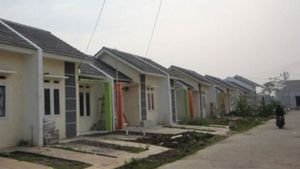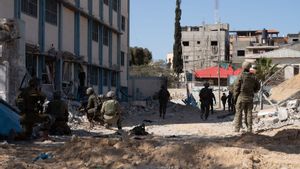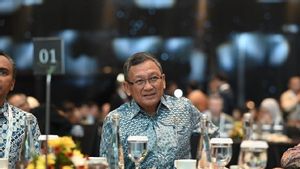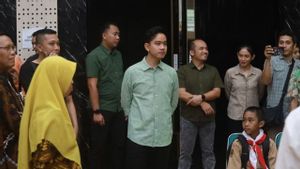
Through the article "Aircraft Accident SAR Fund, Who Is Responsible?" we understand that the regulations require airlines to cover SAR costs. There is an insurance scheme which is the way to enforce the regulation, even though its implementation is still sluggish. Still part of VOI's signature series, "Aircraft Search and Rescue Snare", this article will explore whether the insurance scheme really covers all these costs?
The Srijawa Air SJ-182 accident early last month added to the long list of tragedies in the Indonesian aviation world. In addition to claiming many lives, the material losses incurred were not insignificant, including search and rescue (SAR) costs. Actually there is a way to solve this cost problem, namely through insurance. The question is, does the insurance company really cover all these costs?
Reflecting on the Sriwijaya Air SJ-182 plane crash, it requires large resources for SAR operations. From the number of personnel, for example. Searching for victims and wreckage involved 3,818 people. Not to mention in terms of equipment, which includes 54 ships, 18 rigid inflatable boats, three helicopters and 33 ambulances.
That has not been multiplied by the number of days the SAR operation moved. As is known, Sriwijaya Air SAR operations lasted for 12 days, from January 9-21.
The duration is insignificant when compared to the plane crash that has happened before. For example, the fall of Air Asia QZ8501 in 2014 and Lion Air JT 610 (2018) which took months for SAR operations to stop.
Seeing the number of personnel, the equipment used, and the duration of SAR operations, it is not difficult to estimate the amount of costs required for that. One of the SAR operating costs announced by the government is Air Asia QZ8501, which reached IDR 1 trillion.
So far, the rules for financing SAR operations refer to Law Number 29 of 2014 concerning Search and Rescue and Law Number 1 of 2009 concerning Aviation (Aviation Law). The regulation appointed the National SAR Agency (Basarnas) to be the party most responsible for searching and evacuating aircraft accidents.

In the Lion Air JT-610 accident, for example. The initial SAR operation fully uses the Basarnas budget. This was revealed by Yusuf Latif, Head of Sub Division of Media Relations between Basarnas. "For the first week of evacuation, during the emergency response, Basarnas still uses the budget," Yusuf told Tirto.
In the Aviation Law, the maximum limit for state-funded SAR operations is seven days. But in reality, the search time can be more than a week. And because it is urgent, like it or not the state must first cover the SAR operation funds. No problem, of course. We know it's a matter of life.
However, there are other budgets that may be used for evacuation. This refers to Article 73 of Law 29/2014 which states that SAR costs can come from "other legal and non-binding sources of funds." And one of them is through insurance.
Article 62 of the Aviation Law requires every airline company to insure its aircraft, aircraft personnel, second and third parties, and aircraft incident and accident investigation activities. On this basis, aviation insurance observer Sofian Pulungan is of the opinion that insurance should cover all SAR operating costs.
"Nobody flies without insurance. Every insurance includes elements of SAR. The amount must be sufficient," Sofian said when contacted by VOI on February 16.

Likewise, aviation observer Arman Juffry also said that airline insurance companies should cover SAR costs. "Insurance companies are supposed to cover search and rescue (SAR) costs," said Arman when contacted by VOI.
He explained the amount of insurance covered by various companies. "It ranges from 500 thousand US dollars (US) to 10 million US dollars," said Arman.
Arman said, SAR insurance is divided into two types. The first is a search which includes the start of the SAR operation to the discovery of the fuselage. "The second rescue, starting from the process of removing debris and the fuselage, bodies, black boxes, until the cessation of operations."
As long as it meets fair and reasonable principles, all SAR costs can be covered by insurance. He gave an example of the meaning of the element of fairness.
For example, for the officer consumption budget. Arman said the budget would not be reimbursed if the food price was 100 thousand. But, "if for example 20 thousand is fair."

In addition, the question of the cost of guarding the night at the scene according to him, as long as it is reasonable, it can be reimbursed by the insurance company. Likewise with the cost of fuel for ships and planes incurred to search for victims and aircraft wrecks.
Then, how long does the insurance last?
Still according to Arman Juffry, the principle adopted to withdraw aircraft insurance funds is to pick up the ball. According to his 20 years of experience in the airline insurance industry, at least the time required to withdraw money is about two weeks.
"From the first incident, the airline usually coordinates directly with the insurance company. What is the purpose of asking for the money to be prepared. Once the documents are finished, usually two weeks have been paid," he said.
In fact, said Arman, insurance companies that have developed as they are today can disburse insurance funds even faster. "Now the aviation insurance company can make a down payment in advance."
In Indonesia there are several companies that cover aircraft insurance. In the case of Air Asia QZ8501 in 2014, for example, PT Asuransi Jasa Indonesia (Jasindo) and PT Asuransi Sinar Mas covered insurance for the fuselage.
As reported by Kompas, the then director of Jasindo, Sahata L. Tobing, estimated that the insurance value covered reached US $ 50 million. Meanwhile, specifically for aircraft, his party insures Allianz Global.
Follow the Writing of This Edition Series: Aircraft Snare
The English, Chinese, Japanese, Arabic, and French versions are automatically generated by the AI. So there may still be inaccuracies in translating, please always see Indonesian as our main language. (system supported by DigitalSiber.id)











